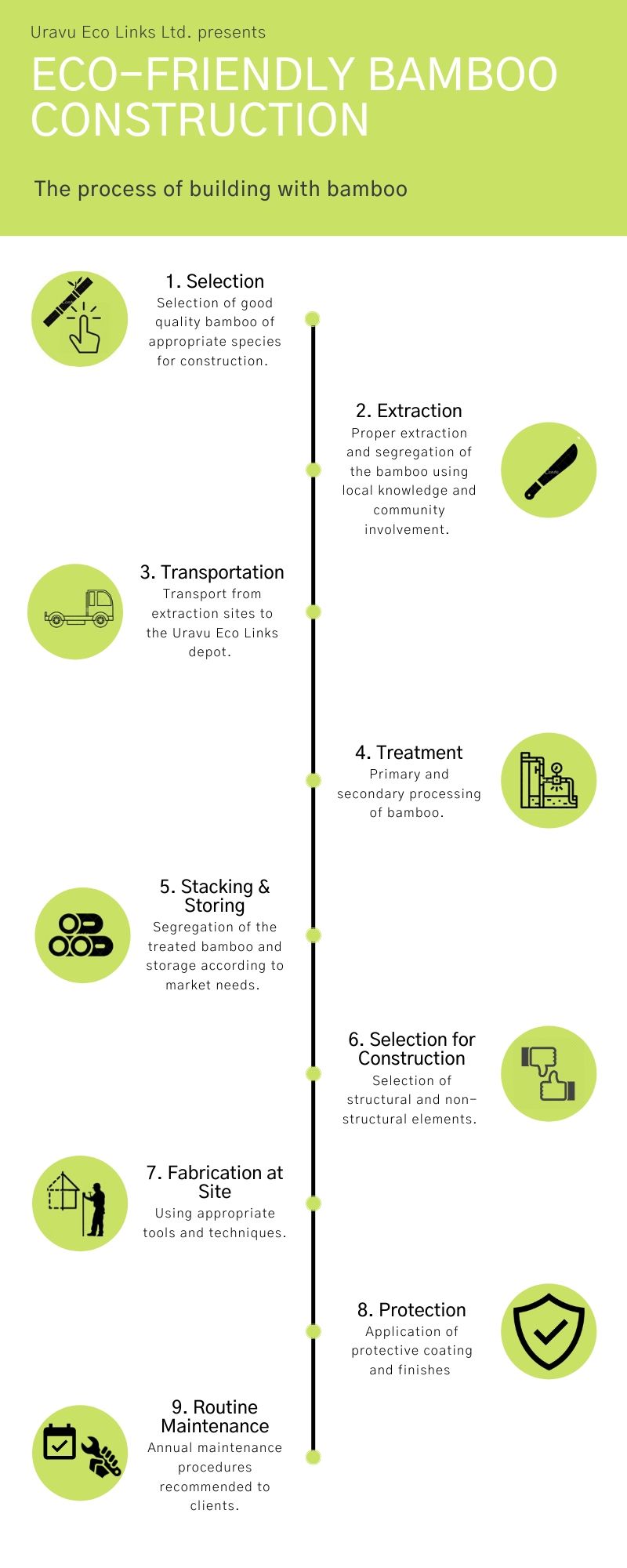Construction
Construction
Uravu Eco Links Ltd. provides green building solutions with innovative designs using local materials such as bamboo, palm, mud, or reused and recycled wood. We promote environmental sustainability in our structures.
Construction of buildings with bamboo provides many benefits to the local economy including employment opportunities and indigenous skill development. Bamboo has remarkable attributes if handled appropriately. Its astonishing strength and flexibility make it suitable for all types of constructions and structures. It can be used to build pillars, walls, window frames, rafters, room separators, ceilings and roofs. Bamboo can be easily used in combination with many other types of construction material. It is a natural and renewable resource, which grows rapidly almost anywhere. These characteristics of bamboo make it an ideal material for helping to reduce the carbon footprint.
Our mission and vision are based on sustainable principles and the sustainable development goals, which we are trying to achieve by means of using bamboo. We apply manual skills and traditional knowledge, which we aim to develop further by combining it with appropriate technology, innovative ideas and designs. Quality work and timely deliverables are our key motives.
You will find descriptions of completed projects and more information about Uravu Eco Links’ work in the “Projects” section.
Why use bamboo for construction?
Bamboo is one of the oldest traditional building materials used by humankind. It is a renewable and versatile resource characterized by high strength and light weight, and is easily worked using simple tools. It has higher compression strength than wood, brick or concrete and a tensile strength rivaling that of steel. Bamboo is a substitute building material for conventional materials which is renewable, environmentally friendly and widely available. Industrially treated bamboo has shown great potential for production of composite materials and components that are cost effective and can be successfully utilized for structural and non-structural applications in construction.
Advantages
Light, strong, flexible and versatile
Environment-friendly
Accessible to the poor
Self-renewing resource
Fast growing
Aesthetically pleasing quality
Process

